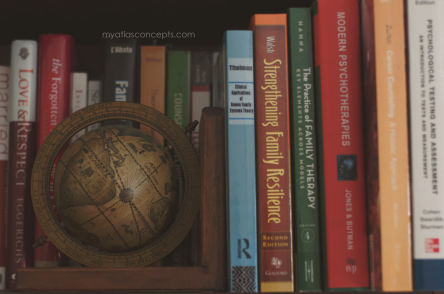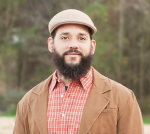
Regardless of your experience as a therapist, you should well know there is value in both consistency and flexibility. Like most professions, the field of counseling is ever-changing. Conversely, the acknowledgement of the impact consoling words and encouragement have on humans is well-known; a conservative historical reference dates back to at least ancient Greece. So while digital software, phone apps, advancements in neuroscience, as well as, electro this-and-that keep things fresh, it is difficult for therapists to be confident they are doing all they can to provide any given service. Arguably, there is always a better, more efficient, or more innovative way to provide therapeutic healing. On the other hand, somewhere in the middle of my degree pursuit I concluded a great counselor can perform effective therapy inside a cardboard box. While I still believe this statement (and share it with others often) I am not without understanding the weight of social constructs on myself and my clients. In that light, the following will address some of my thoughts on engaging therapy outside of the box.
Consider the wave of holistic treatment. An effort similar to self-actualization of which achievement lies in understanding of the insolubility. In our plight as helping professionals we push through the marring of our ego to eventually find we can make a difference. We discover in the moment we work with a client we are best served by leveraging the skills, tools, and environment we are allotted in that instance. Moreover, we harness the capabilities and capacities of our clients. Within ethical and legal borders, there is something to be said for simply a method or an approach that works. So while you continually hone your craft, I hope to offer a few uncomplicated considerations that may bolster your effort. At the least the following points may serve as a periodic self-check or perhaps a starting point for your next self as the therapist remodeling.
The Traditional Five Senses
You don’t have to be an ecotherapist to harness the power of the environment; however, many therapists overlook ways to integrate stimulation of all the five senses and create a healthy space.
Ever run across the term biophilia? As I understand, the term is used in reference to human connection to nature. While there is a perception the use of natural products in any environment reduces toxins, these statements may often be reduced to bold claims grounded mainly in marketing. In truth, natural toxins exist as well. The difference boils down to selecting natural non-toxic materials in lieu of manufactured off-gassing materials (Kennedy, Smith, & Wanek, 2015). What is more important are the benefits of being connected to nature such as positive emotional experiences and increases in overall well-being (Lumber, Richardson, & Sheffield, 2017). Items such as wood, silk, wool, and cotton are easily integrated. Living plants add a number of benefits and offer great metaphors related to growth and life. A low maintenance indoor planting of lavender may be a great starting place.
If you have the latitude to change the wall, ceiling or floor colors in the place you provide mental health services, do so with some level of insight on the effects of color on human emotion and cognition. A discussion with an art therapist may be worth your time. Beyond the color of the more permanent aspects of the room, colors can be integrated in several ways including pillows, rugs, therapist clothing, pictures and other decorations, etc. Keep in mind that various shades and tones may hold different meanings.
A bottle of water, healthy snacks, candies and mints are options to intrigue the sense of taste. This effort must be minded carefully as clients may be dealing with shame related to body image, have emotional eating tendencies, or allergies. Being mindful of the issues clients are facing is critical, as there is a difference in supporting a bad habit and giving a client an opportunity to choose a healthy alternative. Keep in mind organic or natural foods have sensory and emotional appeal and can create feelings of tradition, comfort and safety (Franco, Shanahan, & Fuller, 2017).
Diffusing essential oils is becoming increasingly popular in therapy and healthcare settings. The trick here is to know both what you’re buying and the impact. Quality matters as the benefit is not simply fragrance. The effects of essential oils are driven by chemical makeup and concentration (Cardia et al., 2018). A bit of knowledge goes a long way in this area; for instance, some oils which promote stress relief and relaxation also promote sleep. Unless you’re a hypnotherapist this may not be an intended result. I mentioned lavender earlier regarding live plants; lavender is also a popular essential oil. In both cases, there should be caution when using lavender as allergies and skin irritation are both possible (Cardia et al.). By many accounts, the jury is still out on the effects of essential oils as much of the information available is conflicting though the evidence is chiefly anecdotal (Franco, Shanahan, & Fuller, 2017). If you order essential oils from a third party it is wise to verify protective seals have not been tampered.
I would be remiss in not mentioning lighting. Especially considering the success (however short-lived or debatable) light therapy has evidenced concerning Seasonal Affective Disorder (Moscovici, 2006). In general counseling offices, I don’t suggest anything near the 10,000-lux associated with light therapy, but there is science behind “good lighting.” It’s safe to say the age of fluorescent lighting is nearing its end in most settings. But what of the amount of light? Studies suggest dimly-lit therapy settings result in a more positive experience for clients, increasing disclosure as well as feelings of safety and comfort. While low lighting can cause your eyes to tire/strain, it’s not linked to permanent harm.
We’ve all tried those noise makers outside of our doors at one time or another. In many cases they work well. Most people will believe if they can hear someone else, they themselves can be heard and if this occurs during your session it’s a problem. Aside from keeping the session private and without distraction, there are other ways to mind the auditory sense. Have you ever asked a client if you can play a musical request? Perhaps disrupt the monotony of your voice with a relevant and insightful video. Additionally, a simple internet search can offer relaxing sounds of nature which may also be leveraged in a session. In fact, a great deal of evidence supports human preference of natural sounds such as wind and water over industrial noises and sounds related to traffic (Franco, Shanahan, & Fuller, 2017).
What about a quote of the day? These have been inspiring people for ages, but are easily overlooked by therapists as a tool in practice. Sure if a client mentions a quote or cliché they thought of during their long day at work that helped them push through, you’ll acknowledge it. But what if you put your own quote on a dry erase board or easel each day or week? The avenues this tactic opens are endless. Before you know it, you’ll have clients offer you quotes and those same clients will be validated when their quote ends up on your wall. If there’s no room for an easel, or you don’t want to tie up your only dry erase board, quotes can be printed on small slivers of paper and given to clients.
These “practice boosters” can be truly refreshing to you and your practice. Your clients recognize both your consistency and irregularity in addition to your flexibility and rigidity. Modeling is an age-old technique; however, it doesn’t have to occur in a rehearsed or traditional sense and likely works better when it’s simply a display of who you are. If you aren’t willing to change, don’t expect your clients to be.
References
Cardia, G. F. E., Silva-Filho, S. E., Silva, E. L., Uchida, N. S., Cavalcante, H. A. O., Cassarotti, L. L., … Cuman, R. K. N. (2018). Effect of Lavender (Lavandula angustifolia) Essential Oil on Acute Inflammatory Response. Evidence-Based Complementary & Alternative Medicine (ECAM), 2018, 1–10.
Franco, L. S., Shanahan, D. F., & Fuller, R. A. (2017). A Review of the Benefits of Nature Experiences: More Than Meets the Eye. International Journal of Environmental Research and Public Health, 14(8).
Kennedy, J. F., Smith, M. G., & Wanek, C. (2015). The Art of Natural Building : Design, Construction, Resources (Vol. Second editon, completely revised expanded & updated). Gabriola Island, BC: New Society Publishers.
Lumber, R., Richardson, M., & Sheffield, D. (2017). Beyond knowing nature: Contact, emotion, compassion, meaning, and beauty are pathways to nature connection. Plos One, 12(5), e0177186.
Moscovici, L. (2006). Bright light therapy for seasonal affective disorder in Israel (latitude 32.6 degrees N): a single case placebo-controlled study. Acta Psychiatrica Scandinavica, 114(3), 216–218.
Jordache Williams is currently based in Rock Hill, SC and is a Licensed Professional Counselor with Atlas Concepts, LLC.

